Al-Madrasa al-Zahiriyeh in Damascus: A Timeless Jewel of Islamic Architecture: Located in the heart of Old Damascus, Al-Madrasa al-Zahiriyeh (the Zahiriya Library and School) stands as one of the most significant architectural, historical, and cultural landmarks in Syria. This medieval Islamic complex is not only the final resting place of one of the greatest Muslim military leaders, Sultan al-Zahir Baybars, but also an enduring symbol of Islamic education and scholarship.
Whether you are a history enthusiast, an architecture lover, or simply curious about Damascus’s rich past, visiting al-Zahiriyeh offers a unique and powerful window into the Islamic Golden Age, the Mamluk period, and Syria’s scholarly traditions.
Quick info: Al-Madrasa al-Zahiriyeh
| Topic | Quick info |
|---|---|
| Name | Al-Zahiriyya Madrasa / المدرسة الظاهرية |
| Location | Old City of Damascus, Syria (near the historic core) |
| Founded / Built | 1277–1281 CE (13th century, Mamluk period) |
| Founder / Patron | Named for and associated with Sultan al-Zāhir Baybars (Baybars I) — his tomb is in the complex. |
| Architect | Architect recorded as Ibrāhīm ibn Ghanaʿim al-Muhandis; building inscriptions exist and date phases of completion. |
| Original functions | Built as a madrasa (school) and mausoleum; also had an endowed library from the start. |
| Current use | Evolved into a public/general library in the late 19th century (organized c.1876–81); long served as an important manuscript/library site and is a historic monument within Damascus’s Old City (UNESCO area) |
| Architectural highlights | Fine example of Mamluk architecture: large dome over mausoleum, carved stone portal with muqarnas, alternating stone banding and carved inscription bands |
| Significance | One of the largest / best-preserved Damascene madrasas of the Mamluk era; important for scholarship and manuscript collections historically. |
| Quick visiting note | Located in the heart of the Old City — often shown on historical/architectural walks of Damascus. (Check current local access / opening hours before visiting.) |
Historical Background of Al-Madrasa al-Zahiriyeh
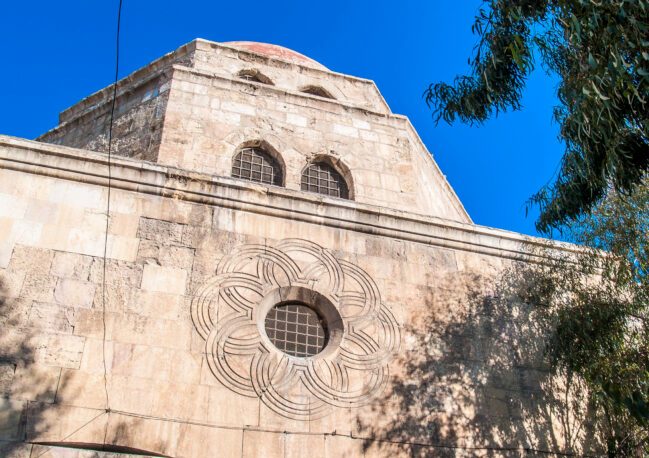
Who Was Al-Zahir Baybars?
The madrasa takes its name from al-Zahir Baybars, the legendary Mamluk sultan who played a central role in resisting the Mongol invasions and defeating the Crusaders. Known for his strategic genius and reforms, Baybars ruled from 1260 to 1277 and helped solidify Mamluk control over Egypt and the Levant.
Upon his death, his son ordered the construction of the madrasa and mausoleum in his honor. It became both a religious school (madrasa) and a funerary complex, a tradition in Islamic architecture of the time.
Construction and Legacy
Al-Madrasa al-Zahiriyeh was built around 1277–1281 during the Mamluk period. Over the centuries, the complex expanded and evolved, eventually becoming one of the most renowned libraries in the Arab world by the late Ottoman era. Its prestige grew due to donations from scholars and intellectuals who left thousands of manuscripts and rare books in its care.
Al-Madrasa al-Zahiriyeh : Architectural Features
Exterior Design and Entry
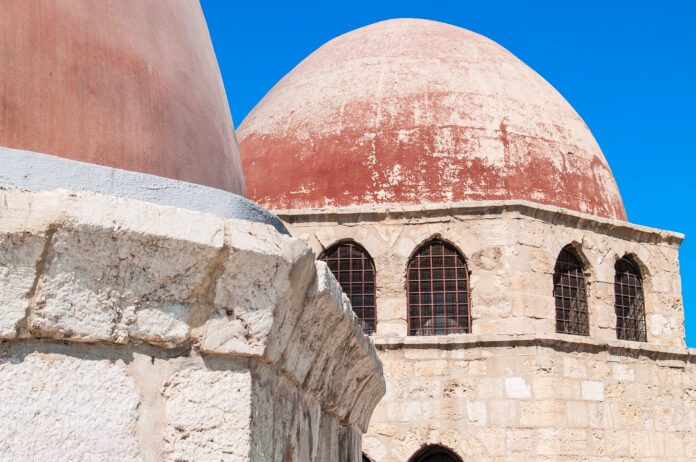
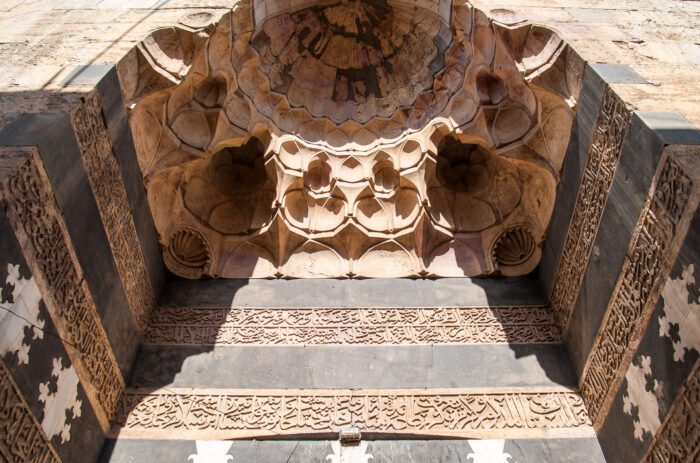
From the outside, the madrasa may seem modest, but it exudes a classic Mamluk elegance. The main portal is intricately decorated with muqarnas (stalactite vaulting) and inscriptions carved in stone, welcoming visitors into a space that has witnessed over seven centuries of history.
The Courtyard
Once you enter, you’ll find a tranquil rectangular courtyard featuring traditional Islamic design—stone-paved floors, central fountain, and a symmetrical layout. The courtyard is surrounded by student rooms and study halls, typical of madrasas of that era.
The Mausoleum of Baybars
At the heart of the madrasa is the mausoleum of Sultan al-Zahir Baybars, a sacred and historical chamber where the sultan’s tomb lies. This space is particularly emotional and inspiring, as it contains the remains of a ruler who shaped the fate of the Islamic world.
The interior features finely decorated walls with marble inlays, Arabic calligraphy, and a domed ceiling that filters natural light in a dramatic way. The spiritual atmosphere is powerful, and many visitors find this room to be the highlight of their visit.
The Zahiriyeh Library
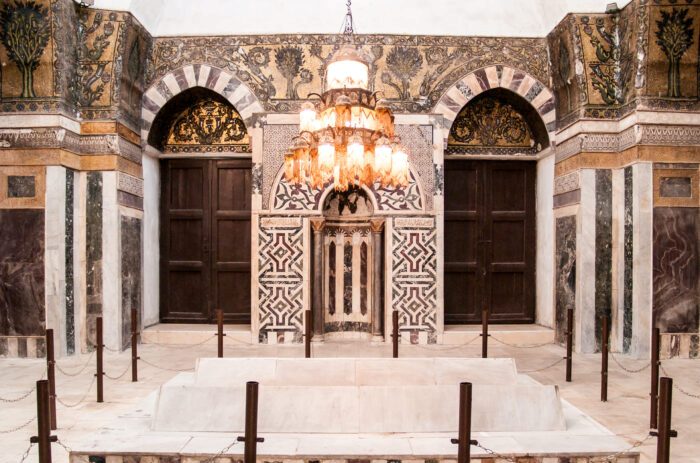
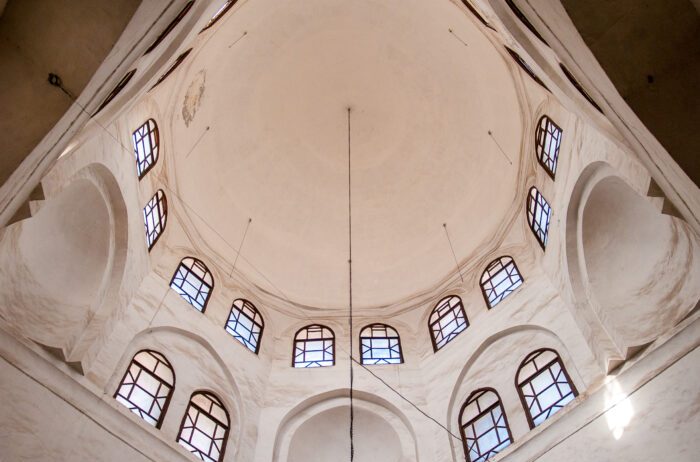
One of the Oldest Libraries in the Middle East
Over time, al-Zahiriyeh became known as the Zahiriyeh Library (Maktabat al-Zahiriyah). It became a major center of learning in Damascus and held tens of thousands of manuscripts, many of which are unique, handwritten copies of Islamic theology, jurisprudence, history, medicine, astronomy, literature, and poetry.
By the 19th century, the library had gained international recognition, and today it remains a vital part of Syria’s scholarly legacy.
What Happened to the Manuscripts?
In the 20th century, many of the manuscripts were transferred to the National Library of Damascus (Al-Assad Library) to ensure their preservation. However, the legacy of the Zahiriyeh Library as a cornerstone of Islamic learning still holds strong.
What to Expect When Visiting
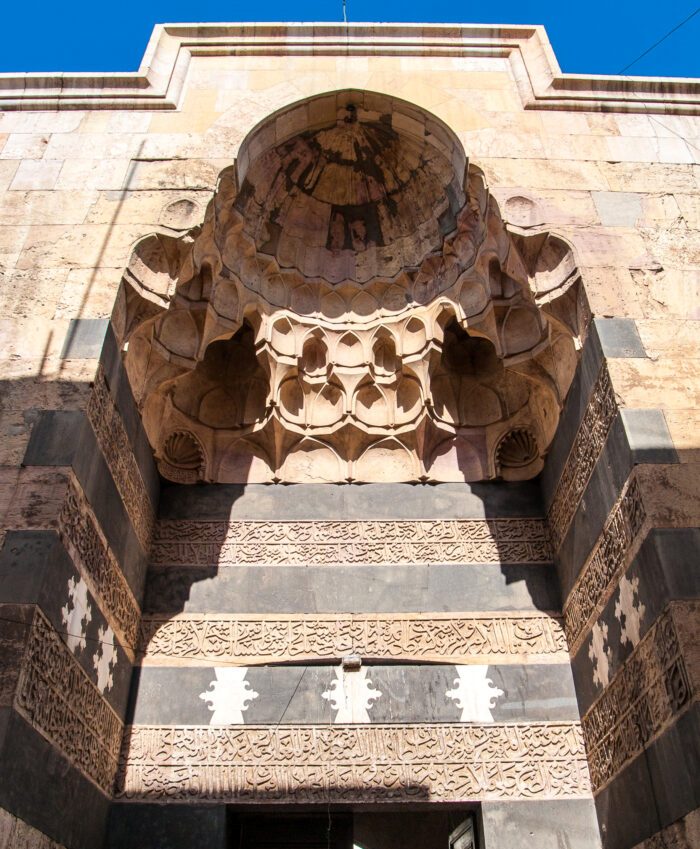
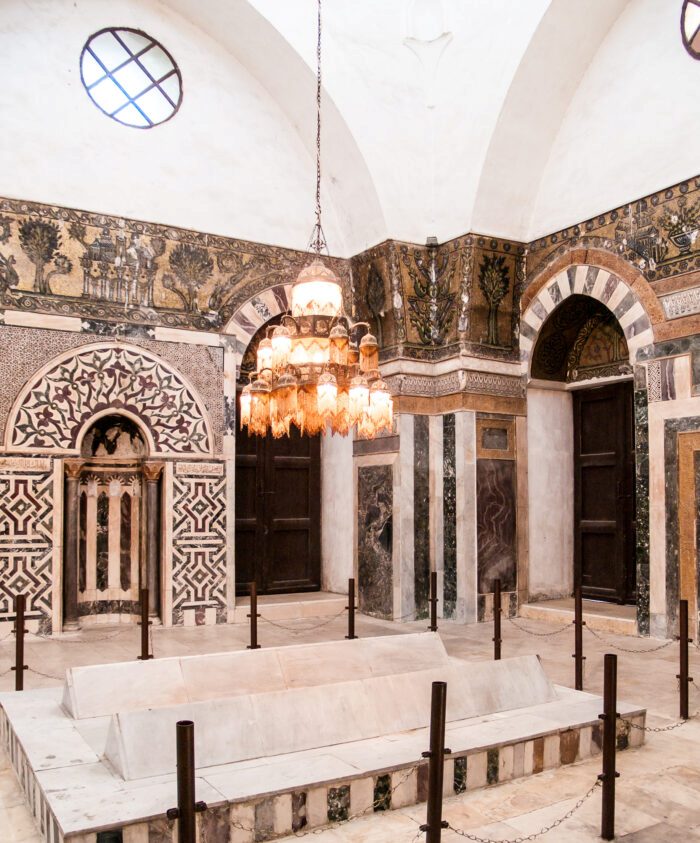
Opening Hours and Access
- Location: Souq al-Sarouja, Old Damascus (just outside Bab al-Faradis gate)
- Opening hours: Typically from 9 AM to 3 PM, Sunday to Thursday (subject to change)
- Entry fee: Free or symbolic (check locally)
Since this is a historical religious site, visitors should dress modestly and speak quietly, especially inside the mausoleum.
Guided or Solo Visit?
If you speak Arabic, you might find someone on-site to explain the history. However, for non-Arabic speakers, it’s recommended to hire a local tour guide who can bring the site to life with stories and context, especially about Baybars and the significance of the library.
Why It’s a Must-Visit in Damascus
- Unique fusion of history, architecture, and education
You’ll see one of the few places that served as a tomb, a school, and a library all at once. - Home of a legendary ruler
Paying respects at the tomb of Baybars is a moment of connection to the past that few travelers forget. - Atmospheric charm of Old Damascus
The madrasa is surrounded by narrow stone alleys, artisan shops, and historical mosques, making it a perfect stop during a walking tour of the old city.
Tips for Tourists
Best Time to Visit
Visit in the early morning when the site is less crowded and the temperature is cooler. Damascus can be quite hot in summer, so spring and autumn are the best seasons to explore on foot.
What to Wear
This is an Islamic site, so:
- Men: Long pants and short/long-sleeved shirts.
- Women: Long skirts or pants, long sleeves, and a headscarf may be required inside the mausoleum.
Photography
You can take photos in the courtyard, but inside the mausoleum or library, photography might be restricted. Always ask before taking photos of people or sensitive areas.
Nearby Attractions
If you’re visiting al-Zahiriyeh, consider seeing the following sites nearby:
- Bab al-Faradis: One of the original city gates.
- Al-Hamidiyah Souq: The most famous covered market in Syria.
- Umayyad Mosque: Just a 15-minute walk away.
- Azm Palace: A gem of Damascene architecture and culture.
Final Thoughts
Al-Madrasa al-Zahiriyeh is more than a historical monument—it is a reflection of Syria’s soul. It bridges past and present, uniting themes of leadership, scholarship, architecture, and spirituality. Visiting it is a moving experience that deepens your understanding of Islamic civilization and the incredible legacy of Damascus.
For tourists interested in history, culture, and hidden gems, al-Zahiriyeh is a must-see stop on any Damascus itinerary.
Finally.. If you have any questions, please contact us. To explore further, visit our Facebook Syria collection for rare images and cultural highlights.
Sources & References:
UNESCO – World Heritage Centre: https://whc.unesco.org
Archnet – Architecture & Heritage Database: https://www.archnet.org
World History Encyclopedia: https://www.worldhistory.org
Syrian Heritage Archive Project: https://syrian-heritage.org
Global Encyclopedia: Wikipedia



